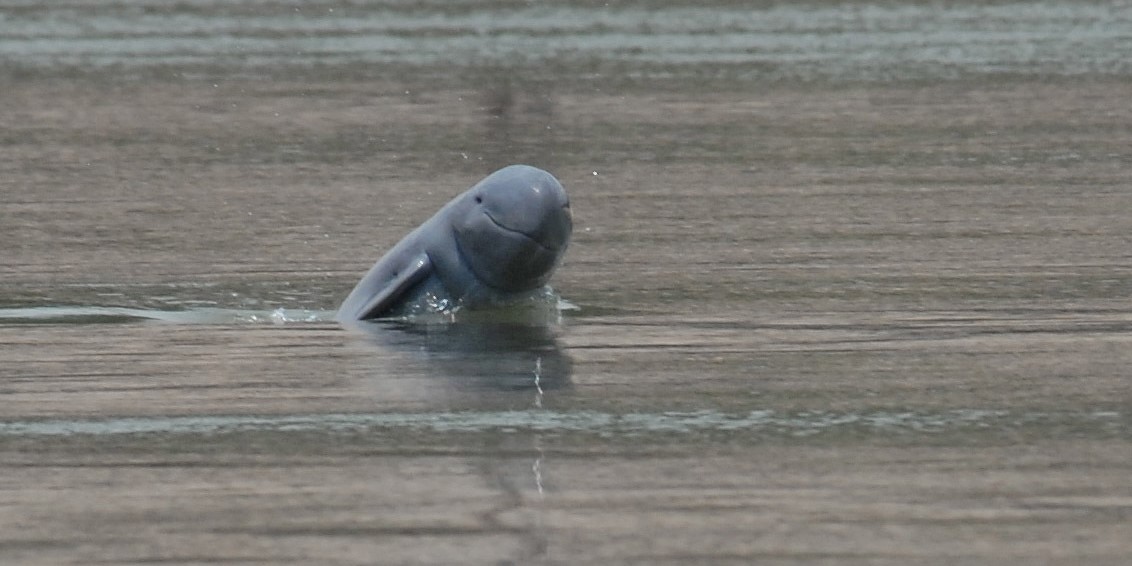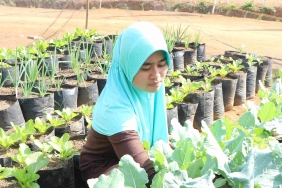WWF INDONESIA UPSTREAM MAHAKAM LANDSCAPE ORGANIZES SURVEY AND MONITORING OF MAHAKAM DOLPHINS (ORCAELLA BREVIROSTRIS)
By: Agus Suyitno, Syachraini, Iswinanto
WWF Indonesia Upstream Mahakam Program in collaboration with Save Mahakam Dolphin Community and Komunitas Pecinta Alam Damai (KOMPAD) organized a survey and monitoring training for Mahakam dolphins. This training aims to increase the capacity of participants in monitoring Mahakam dolphins, especially their population and habitat distribution. It is hoped that from the results of this training, participants can collect data on dolphins properly so that the existence of dolphins can be monitored regularly, both in terms of population and habitat distribution. The speaker of this training is Syachraini from WWF Indonesia who has a lot of experience in conducting surveys and monitoring activities of Mahakam dolphins.
The training was conducted for 4 days (December 5 -8, 2016), the first day was conducted classroom material, the second and third days were conducted field practice and the last day was conducted data analysis of the results of field practice and evaluation of training results including follow-up plans. The total number of participants was 18 people, in the field practice was divided into 4 teams. Teams 1 and 3 conducted survey exercises in the Belayan River and Muara Muntai areas, groups 2 and 4 conducted survey exercises in the Pela River and Muara Kaman areas.
Fortunately, the participants in this training were able to find dolphins during the training practice, large groups of dolphins were found in the Pela River Estuary area towards the Belayan River Estuary. At the time of the training practice of surveying and monitoring of dolphins, river conditions were high tide, some areas were flooded. From the results of field observations, the total number of dolphins encountered by trainees ranged from 12-16 individuals.
Observation of dolphins is a fun thing, when they find the presence of dolphins, participants feel happy to observe the movement of dolphins, record the number of findings, behavior and do documentation. However, patience is needed in conducting pesut surveys, especially regulating the speed of the boat used to search for the presence of pesut, which should not be more than 12 km / hour. In one boat, there are 4 participants, who have their own tasks in turn, some are in charge of taking notes, monitoring the presence of dolphins and taking pictures.
After field data is collected, data analysis activities are carried out to determine the population size using photo data of pesut fins. So far, the method that can be done to see the differences and determine the number of individual dolphins is by observing the differences in fins on dolphins, each dolphin has a different fin shape. The results of the analysis of pesut fins together there are 16 different fin shapes, so it can be concluded that the findings of pesut at the time of training are 16 individuals.
After the training, as a follow-up plan WWF Indonesia together with the Save Mahakam Dolphin Community and the Peaceful Nature Lovers Community initiated a joint survey and monitoring plan and conducted a campaign related to threats to the population and habitat of Mahakam dolphins in West Kutai and Kutai Kartanegara regencies in 2017.
Mahakam dolphin (Orcaella brevirostris) is the only freshwater dolphin owned by Indonesia, its habitat is found in the waters of the Mahakam River. The habitat of Mahakam dolphin is mostly located in West Kutai Regency and Kutai Kartanegara Regency. Currently, the animal is threatened with extinction due to a decrease in habitat quality due to human activities. The International Union of Conservation of Nature and Natural Resources (IUCN) has categorized the Mahakam dolphin as a Critically Endangered Species. In Indonesia, Pesut is a protected species based on government regulation PP No.7 of 1999 as a derivative of Law No.5 of 1990 concerning biodiversity and its ecosystems.
From the data of the RASI Foundation (Rare Aquatic Species of Indonesia) that the Mahakam dolphin population is very limited, in 2012 it was estimated that only 92 individuals and in 2013 around 100 individuals. Data prior to 2007 that the Mahakam dolphin population was around 90 individuals. The high mortality rate of Mahakam dolphins makes it difficult for the population to be added significantly to the existing population. The average death rate of Mahakam dolphins from 2005-2010 was around 3. The biggest cause of dolphin deaths is often trapped in fishermen's gill nets.
Other disturbance factors that greatly interfere with the life of dolphins are the lack of availability of pesut food (fish) in nature due to overfishing, fishing using poison and stun, the presence of coal transport pontoon boat traffic, waste pollution to rivers, sedimentation due to mining and plantations, many fish breeding grounds (reservoirs) are lost due to land conversion for oil palm plantation development.




